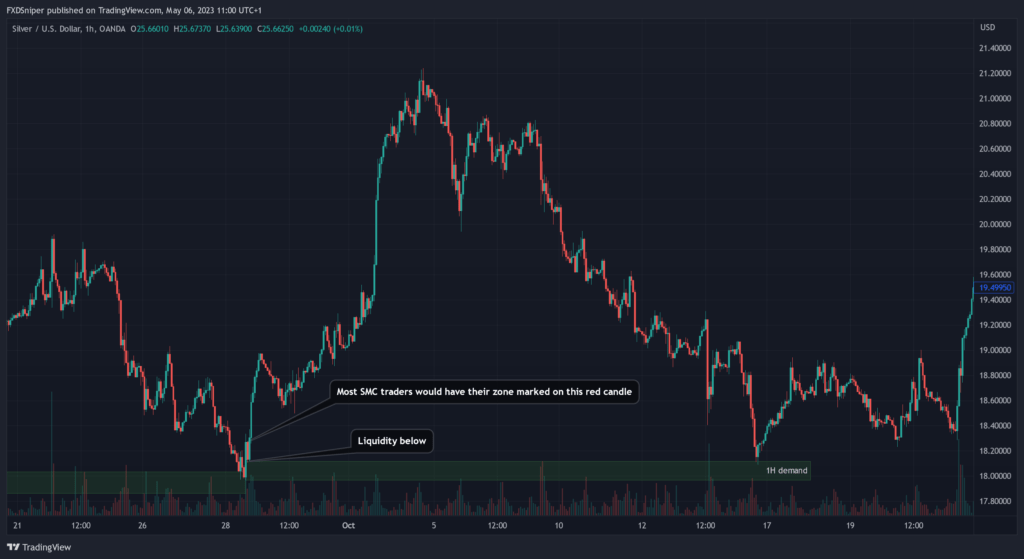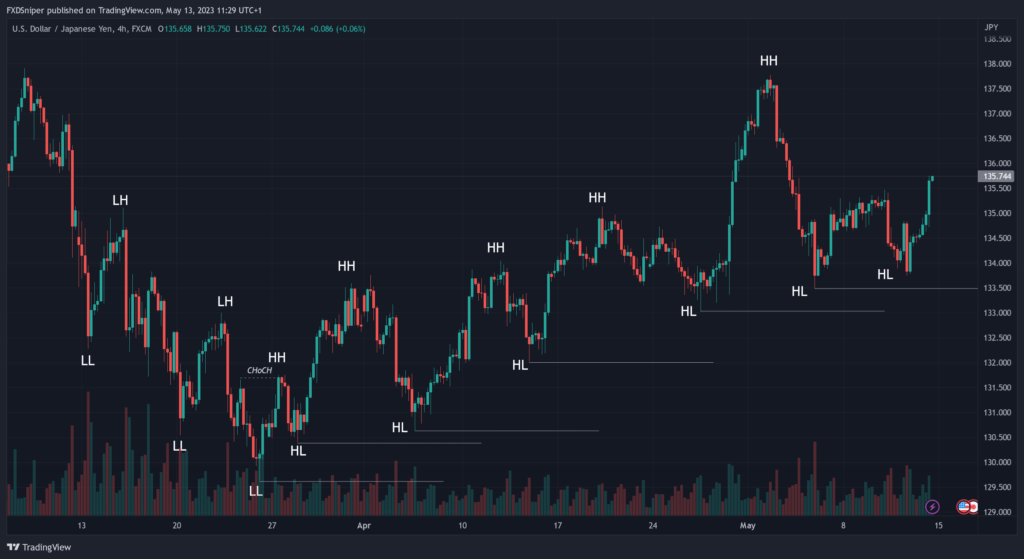Before we start, let me tell you this. Every single strategy in the world works, the only reason 99% of traders lose money is because of their poor trade and risk management.
You can have a strategy with 90% win rate and still lose money if your losses are bigger than your winners.
You can also have a strategy with a 10% win rate and be profitable as long as your risk to reward covers all your losses when you win a trade.
It’s not just the strategy, a lot of it comes down to your emotional state and your discipline. Even if I gave you a strategy with a 100% win rate it doesn’t mean you would actually make any money. All it takes is one mistake, one wrong move and you’ve broken your rules. At that point the strategy no longer applies.
There were actual studies where they had a monkey throw darts at a board to pick the trades and the monkey outperformed Wall Street traders almost every time, let that sink in…
Step 1: Find your style
Everybody is different. Some people work a 9-5, some work night shifts, some are still in school. There is a lot of factors to consider when you’re trying to build your own strategy.
So start by answering some questions.
- What are your available hours?
Is your work or your studies getting in your way? Can you only trade during an Asian session? Is there anything you can do to take some trades during the London or NY session?
Most people I ever spoke to and probably most of you reading this can’t trade the way they want to because their work/school gets in their way. Don’t get me wrong but this is just an excuse, as long as you have your phone and internet with you, you can always find at least a few minutes to check the markets and find a trade.
Most of the analysis you do can be done in 15-20 minutes when you’re at home, just mark up your charts, set some alerts and simply wait for price to reach your levels.
Become a VIP and get access to exclusive insights, profitable signals, and a supportive community that will elevate your trading success, click here to join now.
- What pairs do you like to trade?
All pairs have their active and inactive periods.
If you want to trade US30, S&P500 or NASDAQ but you can only trade during an Asian session, there’s just no point. Indices are most active during the NY session, outside of it there is little to no movement.
Gold, Silver and other commodities can be active during all sessions depending on the economic news happening around the world but most of the time the biggest moves happen during London and NY crossover.
All major FX pairs are mostly active during London and NY sessions.
So yes, if you can only trade during an Asian session you have a disadvantage, so scalping may be the best solution for you. However, if you can, I would recommend trying to find some time to trade during the high volume periods even if it means you have to wake up in the middle of the night.
- Are you a day trader or a swing trader or a scalper?
Statistically speaking scalping is the hardest way to make money as a trader because of the volatile nature of the markets but if that’s your style then go for it. However be prepared to spend hours at a time in front of the charts.
Day trading and swing trading gives you more freedom. You can simply analyse your charts a couple of times a week and check on your trades once in a while.
- Manual trading or limit orders?
If you’re one of the people who don’t have that much time to trade, trading with limit orders may be a good option for you.
Although it may be much harder and may require you to trade with a bigger stop loss it is a very stress free way to trade. Just make sure you have your analysis done correctly and set your limits with strict stop loss and take profit and just let the markets do whatever they want.
However if you do have the time, manual trading always watching the charts will allow you to perform better and adapt to current price action.
- What’s your risk tolerance?
How much money are you willing to lose on each trade and what’s your stop loss level? Or maybe you prefer to hedge your trades instead of using a stop loss?
How much you risk is based on your strategy and your style as a trader. Most traders should aim to risk anything below 2% which is still considered high risk. Some traders risk as much as 5-10% per trade and are still very profitable in the long run because that’s their strategy.
- Fundamentals or Technicals?
Do you trade strictly based on technical analysis or do you base your trades on fundamental news?
One thing you need to understand is that every major news that comes out is already priced into the market before it’s even released so trading in anticipation of the news outcome doesn’t really make sense. You ever heard the term “buy the rumor, sell the news”, that’s why.
Fundamental news does drive the markets but only the long term markets, unless you’re swing trading your trades for months at a time you shouldn’t worry about the big fundamental events.
Events such as NFP, CPI or GDP are already priced into the market when they are released, the big volume spikes and big moves that happen during their release is only market manipulation.
- How emotional are you?
Do you get very emotional when the trade goes against you? Do you find yourself very excited and overconfident when you win a trade?
Although it’s good to have some emotions during trading and you can use them to your advantage in most cases it leads to over trading and revenge trading. If you’re one of those people maybe automating your trading process is a good option for you, using limit orders for example.
Our members already secured 7-figures in funding capital. Join the FXD Academy and take your trading to the next level, click here to learn more.
Step 2: Find your strategy
As I mentioned earlier, every single strategy in the world works. If you keep that in mind it makes your strategy selection process much easier.
I am a supply and demand based trader but I also use SMC concepts, liquidity concepts, price action and a few other strategies. But it all started with me learning how to trade supply and demand and as I was growing and progressing as a trader I started to improve my strategy. I would notice things about the market, I tried to understand what makes prices move and after many, many years of trading it all came together and I developed the strategy I use today.
But you gotta understand it all takes time, you can’t just jump from one strategy to another because it didn’t make you money this week, you must find one strategy, master it and tweak it to match your personality as time moves on.
- Clean charts or indicators?
Do you prefer trading with a clean chart, marking out your zones or drawing trendlines? Or do you find it complicated and you need an indicator to help you in decision making?
Personally I don’t use indicators anymore, but there are some solid indicator strategies. Divergence, RSI and Stochastics or MACD. They all have uses and they can help you figure out the market’s direction.
If that’s something you like using, stick to it and try to get as good as you can. Eventually you will start adding more rules or more confluences to make your indicators perform even better.
Same thing applies if you prefer trading with a clean chart. Let’s say you trade supply and demand, as you get better you might find a better way to draw your zones or you start implementing some liquidity concepts into your strategy. If it doesn’t work you just stick to your original strategy but even if it improves your win rate by a few percent, in the long run it can make you millions.
- Backtesting and demo trading
I’m not actually a fan of backtesting and I’m probably one of the few people who will tell you not to do it. The only acceptable time to backtest a strategy is when you see it for the first time and you need to take it for a test drive. My reasoning behind this is like I’ve said before, every single strategy in the world works, if it doesn’t that’s your fault, it’s not the strategy.
Another reason for me to dislike backtesting is because it doesn’t prepare you for the live market conditions. It doesn’t take any brain cells to draw something on an old chart when you already see everything that’s happened. Even if you use the reply feature on TradingView, it doesn’t prepare you for the live market because you’re trading on all timeframes 24/7 ignoring the news manipulations.
Demo trading is way better as it will teach you to spot your entry/exit criteria as it is happening in the real time. Although it has its flaws it is the better option out of the two and I would just straight to demo trading.
However if you have the funds, forget demo, go live. How many times have you made insane returns on a demo account but as soon as you fund your account real money you lose? That’s because there are literally 0 emotions involved in demo trading. As you’re probably aware by now, emotions play a huge role in trading.
That’s why I always tell people to jump straight into live trading, even if it means you trade with 0.01 lots for a year, just do it because it will teach you more than anything else. And if you lose money, who cares, it’s part of the learning curve. Would you rather spend 50k to go to uni with no guarantees you will ever find a job in your industry or would you rather lose 50k learning how to trade and master a skill that will make you a fortune?
- Risk management
Once you have your strategy sorted out you have to figure out how you will manage your risk.
Would you rather set fixed stop loss and take profit and just let the market take you wherever it wants to or would you rather have a flexible way to control your risk?
Having a fixed SL and TP allows you to minimise the stress involved in trading. It is also the most prefered way to manage risk.
However I am a fan of flexible risk management.
For example, instead of closing your trade at a fixed price you can have a mental SL and close only half of your trade as it is going against you and close the full trade when it gets to your lowest stop level. This way you give your trades some room for error and still maintain low risk. Or you can enter with half your trade size and as price moves against you, you add to your trade.
Also trailing SLs and TPs in most cases will result in your system to perform much better over the long term.

Leading broker 16+ years in the industry
Spreads starting from 0.0 pips
Up to 1:2000 leverage
Trade Forex, Futures, Stocks and Commodities
Instant withdrawals get paid in under a minute
To Summarise
- Find out what type of trader you are and match your strategy to your personality
- Different pairs may require different adjustments to your strategy
- Stick to one strategy and adjust and improve it as time moves on
- Testing your strategy live will teach you more than demo trading or backtesting combined
- Figure out your risk tolerance and your approach to risk management

